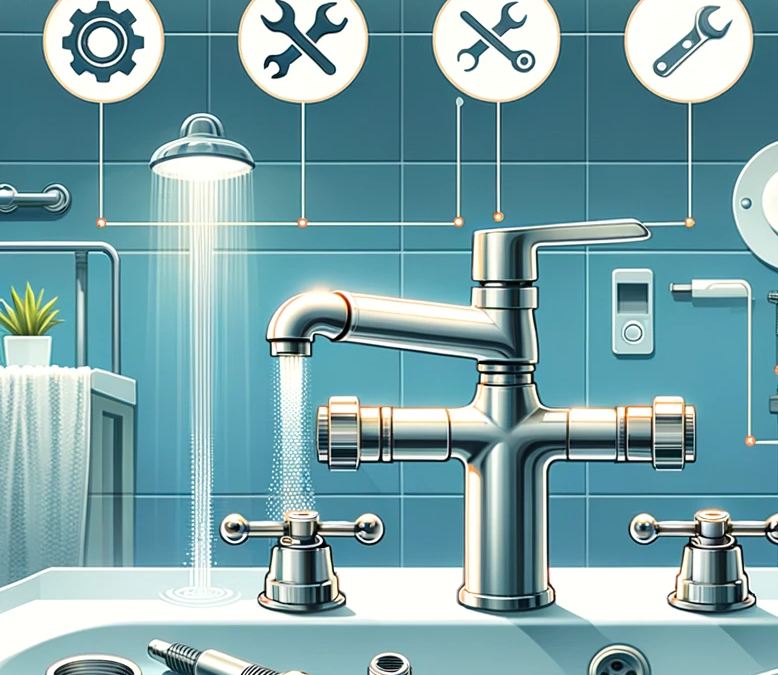Introduction
The constant drip, drip, drip of a leaky bathtub faucet can be a major annoyance. Not only does it disrupt your peace and quiet, but it also wastes precious water and money down the drain. However, before you call a plumber, consider tackling this project yourself! This guide empowers you to diagnose and repair a leaky bathtub faucet with ease. By following these step-by-step instructions, you’ll save money and enjoy a leak-free bathroom in no time.
Identifying the Problem
The first step is to identify the culprit behind the leak. Knowing the type of faucet you have (compression, ball, disc, or cartridge) plays a crucial role in the repair process. Different faucet types have varying mechanisms, so understanding yours helps determine the correct fix.
Many bathtub faucet leaks stem from worn-out washers or gaskets that require replacement. These components create a seal to prevent water from escaping. Unfortunately, over time, wear and tear can cause them to deteriorate, leading to a leaky faucet. To access these parts, you’ll need to disassemble the faucet carefully.
Tools and Materials Needed
Gather the necessary tools before you begin. Here’s a list to get you started:
- Essential Tools:
- Flathead screwdriver
- Allen wrench set
- Channel lock pliers
- Needle nose pliers
Optional Tools:
- Cartridge puller (needed for specific faucet types)
Materials:
- Replacement washers (specific to your faucet model)
- Replacement gaskets (depending on the identified issue)
- Replacement cartridge (if the leak originates from the cartridge)
You can find most of these tools and materials at your local hardware store or home improvement center. Double-check your faucet’s manual or manufacturer’s website to ensure you have the correct replacement parts for your specific model.
Step-by-Step Repair Instructions
Safety First: Before diving into repairs, ensure a safe work environment.
- Turn Off the Water Supply: Locate the shut-off valve, typically found under the sink or behind an access panel near the faucet. Use your wrench (not included in the tool list) to turn the valve clockwise until it stops. Open the faucet handle completely to release any remaining water pressure. Now you’re ready to begin the repair process without any unexpected water disruptions.
- Remove the Faucet Handle: Depending on your faucet design, you might need a screwdriver or an Allen wrench to remove the handle screw. Once the screw is loose, carefully pull off the handle.
- Access the Internal Components: Some faucets have a decorative cover or escutcheon that hides the internal parts. Unscrew or carefully pry off this cover to reveal the working components of the faucet.
- Replace Faulty Parts: Here’s where your detective skills come in handy! Inspect the washer or cartridge for signs of wear and tear, such as cracks, leaks, or mineral buildup. These worn-out components are the likely culprits behind your leak.
- Replacing a Washer: If the washer is faulty, use your pliers to remove the old one and replace it with a new washer of the same size and material.
- Replacing a Cartridge: Cartridge replacement might involve using a specific cartridge puller tool (refer to your faucet manual for details). Once the old cartridge is removed, carefully insert the new one and secure it according to the manufacturer’s instructions.
- Reassemble and Test: Now for the moment of truth! Carefully reassemble the faucet, ensuring all parts are securely in place. Turn on the water supply by rotating the shut-off valve counterclockwise. Open the faucet handle and observe for any leaks. If there are no leaks, congratulations! You’ve successfully repaired your bathtub faucet.
Pro Tip: If a leak persists after reassembly, double-check that all parts are tightened securely and that the replacement components are compatible with your faucet model. Consider consulting a professional plumber for further assistance with complex repairs.
Conclusion
Fixing a leaky bathtub faucet can be a rewarding DIY project. With a few basic tools, some replacement parts, and this comprehensive guide, you can tackle this common household issue and save money on plumbing costs. Remember, a leak-free faucet not only restores peace and quiet but also helps conserve precious water. So, don’t hesitate to grab your tools and put your DIY skills to the test!
